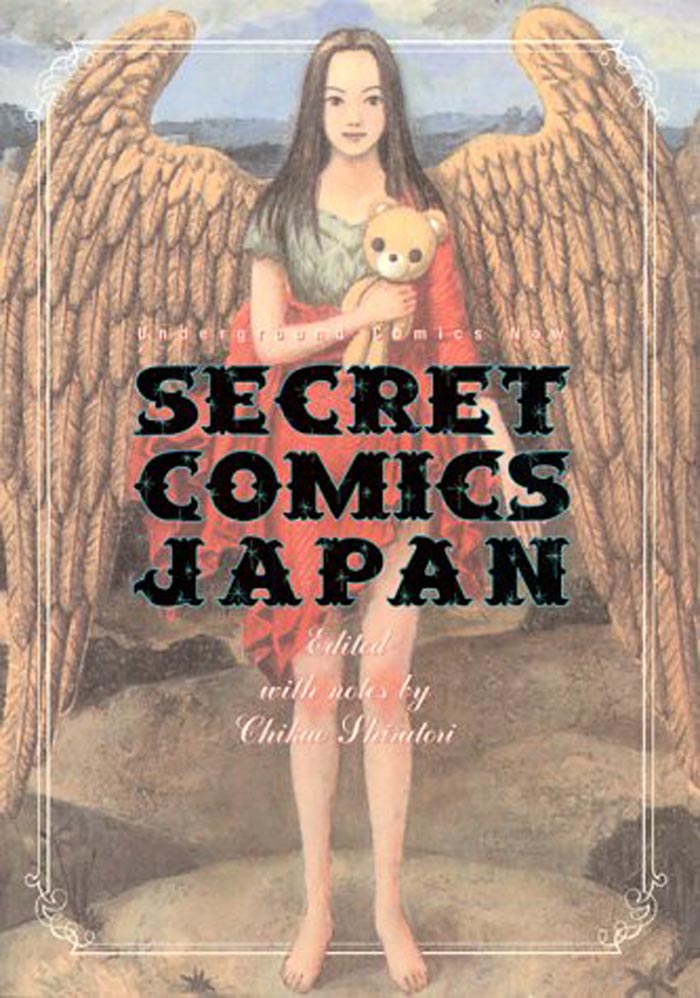
© 2000 Viz Communications, Inc.
[Review copy provided by Viz Communications.]
In Secret Comics Japan, Editor Chikao Shiratori refers to the different populations of manga readers by breaking them into categories, illustrated by a diagram of concentric circles, one inside another.
These include:
Z: The whole population, also including people who don’t read any manga at all. (The box surrounding the circles.)
A: A large segment of the population who are casual readers. If it’s there, they’ll read it. Occasionally, they’ll hunt down a specific title or artist they like. (i.e. The largest circle in the box.)
B: A smaller group who acknowledge that they are manga fans. They know what they like and routinely purchase it. (A smaller circle within the previous category.)
C: The “otaku” who follow their favorite artists, keep tabs on the newest releases and have very well-formed opinions about artists, authors and their styles. (Again, a smaller circle within the previous category.)
X: The total fanatics for whom manga is a way of life. Please note that I don’t mean this in a bad way. (Incidentally, the smallest circle/population in the box.)
Shiratori admits early on that he is a member of the “X” category — which is only fitting given that he is the former editor of Garo, an influential force in underground Japanese comics since 1964. In his introduction, he touches upon the diversity in content and artistic style found in the manga of Japan and examines the traditional differences between the more consumer-driven “majors” and the “underground” comics where the artists’ work exists more for its own sake. In Japan, as in modern countries worldwide, shifts in culture are causing the neat lines that separate the “mainstream” from the “alternative” to blur. This book is intended to introduce American readers to artists and manga that fall outside the generally “mainstream” comics that have been published in English so far.
The works in this anthology, by Junko Mizuno, Hironori Kikuchi, Yuko Tsuno, Yoshitomo Yoshimoto, Kiriko Nananan, Shintaro Kago, Makoto Aida, Benkyo Tamaoki and Usamaru Furuya (whose illustration appears on the cover), are varied in style and content. Yet all adhere to one constant: They are nothing like manga you have (probably) read in English.
Each artist’s visuals embody distinct viewpoints that reflect and, in some cases, drastically contrast with their overall contents/themes. Mizuno’s cute, anime-style girls with “buggy” eyes exist in a garish world where their looks belie their true nature. A beautiful, highly-detailed unreality that borders on the hallucinatory was created by Tsuno. Aida’s work, whose content seems carefully plotted out, looks like a frenzied series of sketches. Several of the segments share a rather upfront and frank approach to their subject matter whether the topic is sexuality, ideology or the day-to-day relationships between characters. This frankness often borders on the shocking: Some readers may find the manga’s content disturbing and difficult to process.
Of all the sections in the book, I was most impressed with “Heartless Bitch” and “Painful Love” by Kiriko Nananan. As Shiratori mentions in the foreword to this section, Nananan’s stark artwork is “almost exactly like storyboards for movies.” “Heartless Bitch” lets readers listen in on a conversation between two friends about one of the girls’ dating exploits. Their bluntness and overall apathy is realistic, a little sad and more reflective of society than we’d like to think. “Painful Love” is, again, stark and resembles shots one would see if they unfurled a movie reel. There is little to no physical movement as we view a girl sitting at a restaurant. Her face is obscured by her long hair, but we don’t need to see her expressions to understand her conflicting thoughts about a boyfriend who has cheated on her. It is a poignant and cynical segment in its simplicity. It is a story that would be hard to tell as effectively in any other way.
Editor Shiratori does a very proficient and informative job in his introductions for each artist’s section of the anthology. I feel as if I’ve received a mini-education on manga from one of the experts. After reading Secret Comics Japan, I’ve come to the conclusion that, in Shiratori’s hierarchy of fans, I am a “B” bordering on “C.” I may not personally seek out a steady diet of these “underground” comics, but, if I can discover new favorites like Kiriko Nananan, it is a worthwhile exercise.
More Info:
SECRET COMICS JAPAN is intended for an adult audience and contains content of a mature nature.
SECRET COMICS JAPAN © 2000 Viz Communications, Inc. All rights reserved. PULP Books are published by Cadence Books, an imprint of Viz Communications.